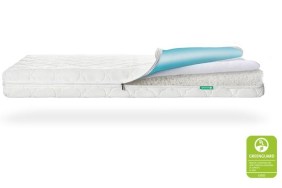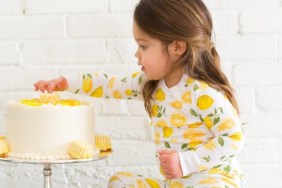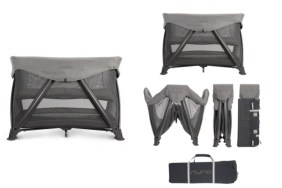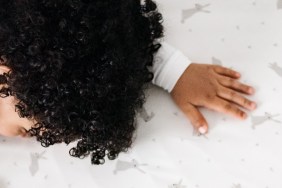Safe sleep is on every parent’s mind and with that it can be challenging to figure just what the right bassinet, crib and mattresses are. Especially when it seems like every day a new article comes out related to hidden toxins and chemicals.
To get help shopping we turned to Suzanne Price, the founder of Sprout San Francisco, a natural and organic children’s boutique.
Momtastic: What are your general thoughts on bassinet vs. crib?
Suzanne Price: Over the 12 years we have been in business, we have seen people make this decision in many different ways. Some people start with the bassinet because they want the baby in their bedroom at night. Some put the baby in a crib in the nursery at night but use a bassinet in the living room during nap time. The most common set up we see is people picking out a crib early to be able to design their nursery around, because no matter what they will need it eventually, and then some getting a bassinet to put next to the bed for the early days to make nursing at night easier. This is a very personal decision, and some couples don’t know what will feel the best to them until the baby arrives. My advice is this: Do not spend too much on a bassinet, because though it’s hard to imagine your baby getting bigger, when they start sitting up as early as 5-6 months, you will have to take them out of that bassinet. Also, start thinking about what crib you want with enough time, because some take a while to order and you’ll need it before you know it.
Momtastic: For parents who start with a bassinet, is it hard to transition to a crib?
Suzanne Price: We actually haven’t seen that to be much of a problem. Some feel that the babies feel cozier in the bassinet when they are very little, but as soon as they start to outgrow it, the crib feels more right for them. There are also safe ways to make a crib feels cozier, such as putting the baby and sleepsack, like a wearable blanket, such as these organic cotton ones.
Momtastic: Any tips for buying a bassinet as far as chemicals and toxins specifically?
Suzanne Price: When buying a bassinet, I would say the number one thing is to be positive that the mattress is not sprayed with harmful flame retardant chemicals. As many bassinets are uniquely sized, it is not easy to swap out the mattress it comes with for a safer one, as you can with most crib mattresses. The other thing to avoid is plastics, which can off-gas such as PVC or phthalates. Since these plastics aren’t often disclosed, I would avoid a bassinet with plastic on it altogether.
Momtastic: Any tips for buying a crib? Specifically are there materials or toxins we should look out for? What about the big price differences?
Suzanne Price: Many of the cheapest cribs out there are made in China with MDF, a particle board that can emit formaldehyde. It is supposed to pass certain standards of formaldehyde emissions, but depending on where it is made I don’t always trust that. I look for cribs that are solid wood and specify that they are made with low VOC paints, or better yet, a natural stain. If you can find one made in the US, I do believe it is worth paying more for. Many cribs now allow you to order a toddler rail or toddler conversion kit, meaning that you can turn the crib into a small bed eventually. This allows you to use the crib up to 4 or even 5 years old, depending on your child’s height, and definitely makes it more worth the investment.
Momtastic: Any tips for buying a mattress? Specifically as far as toxins?
Suzanne Price: I have a whole blog on this here, but in short:
When people ask me about all of the organic options out there and what they should focus on, I always say the MOST important thing is the mattress. Traditional crib mattresses are made of polyurethane foam, a very inexpensive material that is also very flammable. Therefore, to meet mattress flammability standards, these foams are sprayed with terrible chemicals that are now banned in some places in upholstered furniture but still not in mattresses. There are however way that organic mattresses can meet flammability standards without these chemicals. Wool, latex, coconut husks, and even a thin layer of plastic over cotton inside a mattress can make it flame resistant. Look for mattresses made with these materials instead of foam. An organic cotton, or wool or latex, mattress can also be passed down from child to child safely, while polyurethane foam breaks down more the older it is, releasing particles into the air that can have flame retardant chemicals attached to them. Since your baby, with their sensitive lungs, can spend up to 16 hours a day in their crib, a good mattress is the most important investment you can make.








